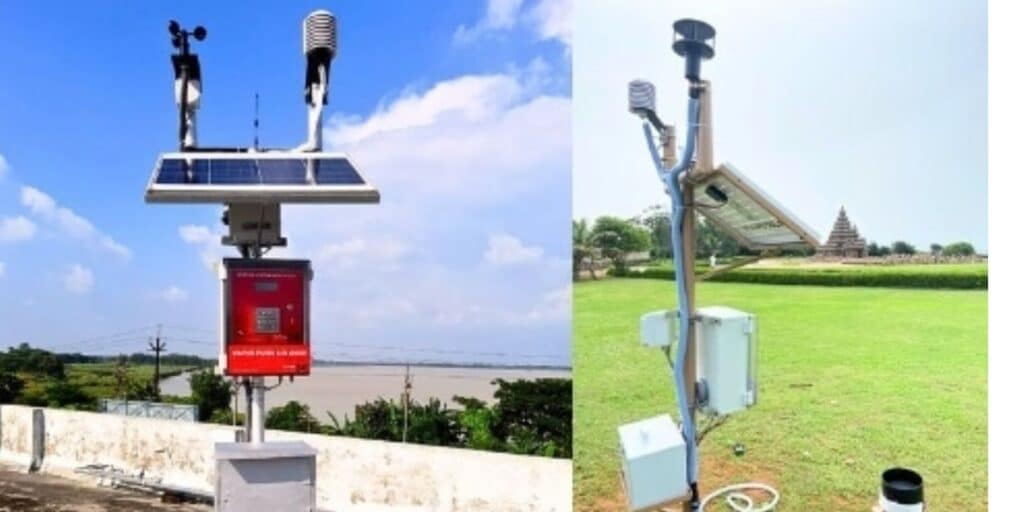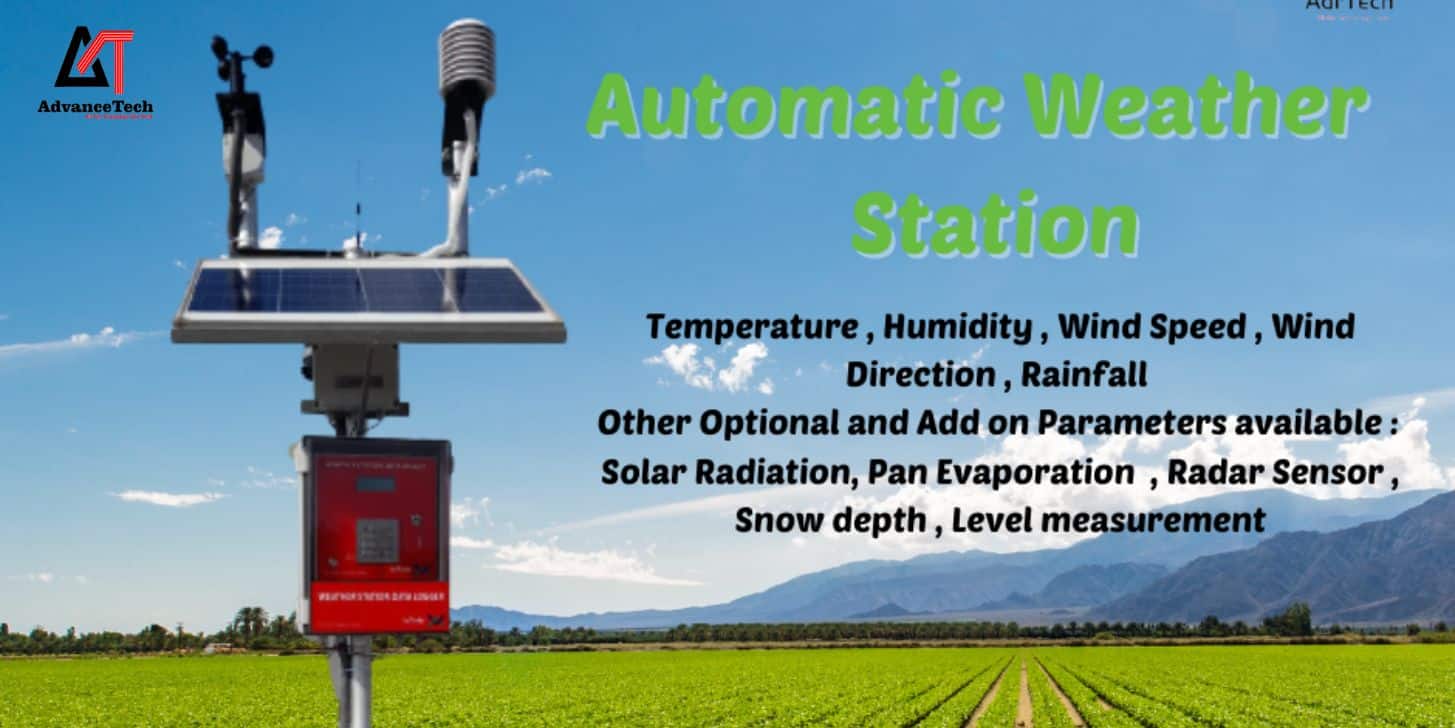An Automatic Weather Station India is not only helpful but also important to stay up to date with correct weather information given the wide and various weather changes of India which is also known as a weather monitor. Localized weather data is essential for disaster management teams, who must prepare for monsoon floods, and for farmers who depend on precise weather forecasts for agricultural purposes.
Automatic weather stations (AWS) are quite important in this situation. We shall discuss Weather Stations in this blog, including their definition, uses, advantages, and setup costs in India.
Table of Contents
ToggleWhat is an Automatic Weather Station?
A group of sensors, data collecting, and transmission devices used to track and record different weather conditions is called an automatic meteorological station . Temperature, humidity, wind direction, speed, rainfall, and air pressure are examples of these parameters.
In contrast to manual weather station operations, AWS functions independently and provides meteorologists and academics with up-to-date data directly.
Automatic Weather Station Components:
Sensors: An AWS usually has sensors to detect sun radiation, temperature, humidity, precipitation, wind direction, and air pressure, among other atmospheric characteristics.
Data Logger: This apparatus keeps track of the information gathered by the sensors. It has the capacity to transmit and store vast amounts of data for later study.
Data movement from AWS to a central server is made easier by the communication system. There are other ways to communicate, including radio, satellite, and cellular networks.
Power Source: AWS devices are frequently powered by solar panels, which makes them sustainable and effective, particularly in isolated areas.
Applications of Automatic Weather Stations:
Agriculture:
When deciding when to plant, water, and harvest crops, farmers consult automatic weather stations for agriculture. The production of crops is raised and resource utilization is optimized as a result.
Precision farming is using AWS data to help farmers make accurate choices about planting, harvesting, and watering. For instance, precise estimates of rainfall and soil moisture can assist save water consumption and optimize irrigation schedules.
Crop Disease Management: In some meteorological situations, certain crops are more vulnerable to illnesses. AWS can offer information that aids in the prediction of certain circumstances, enabling the prompt implementation of preventive actions.
Airlines:
weather conditions: To provide safe takeoff and landing operations, airports use AWS to monitor weather conditions.
Flight Safety: Airports use AWS to monitor weather conditions that affect flight operations. Accurate and timely weather data is crucial for take-off and landing operations.
Sea and Coastal Studies:
The monitoring of weather conditions at sea, made possible by AWS, is essential to the safety of marine operations and the management of coastal areas.
Environmental Monitoring:
Data Collection: Real-time data on temperature, humidity, wind direction, speed, rainfall, and air pressure are greatly aided by AWS. For reliable weather forecasting, this information is essential.
Model The inputs: To increase the accuracy of weather prediction models, data from AWS is inserted into them. At the local, regional, and national levels, these models are employed for predicting the weather.
Early Warning Systems: AWS supports the development of early warning systems for extreme weather events like storms, heat waves, and torrential downpours. Accurate and timely data can help prevent fatalities and minimize financial losses by facilitating quicker reactions and improved readiness.
Flood Management: AWS data is used to track river levels and rainfall patterns in flood-prone locations in order to forecast and control flooding, assisting with evacuation plans and minimizing damage.

Benefits of Using Automatic Weather Stations or Weather Station
Accuracy and Reliability: Data from AWS is highly accurate and trustworthy, which is required for a number of crucial decision-making procedures.
Availability: In cases like sudden weather changes and possible natural losses, quick response is made possible by the real-time data produced by AWS.
Cost-Effectiveness: Despite the initial investment, employing AWS has long-term advantages over other options, including lower worker costs and more efficient data collection.
Simple to Use: After installation, AWS runs automatically and has wireless data transmission capabilities, which minimizes the need for ongoing maintenance and manual intervention.
Resource Management: AWS facilitates effective water management, which supports sustainable activities, particularly in agriculture.
Automatic Weather Station cost in India :
Automatic weather station cost in India can depend on its features, parts, and purpose of use. Basic models that are appropriate for small-scale applications like home farming can be purchased. Up to several millions of rupees can be spent on more complex systems with advanced sensors and functions for usage in professional settings, like airports and research centers.
For example, a mid-range AWS uses traditional sensors for small-scale industrial or educational uses . It’s crucial to account for ongoing installation and maintenance costs in addition to the starting price.
It’s a good idea to look at your unique demands and speak with experts who can offer custom advice and installation services before making an AWS investment. In addition, certain businesses provide post-purchase assistance and instruction on proficiently analyzing AWS data, which can be essential for optimizing the station’s possible advantages.
Conclusion
The way that meteorological data is gathered and used in India’s many industries is changing thanks to automatic weather stations in India . AWS offers a wide range of advantages, from improving agricultural productivity to assisting in preparedness for disasters.
AWS is a wise choice for anyone who depends on reliable meteorological data, even while the initial cost may seem excessive given the long-term benefits, which include improved resource management and higher safety. We might think that these systems will become even more indispensable to our everyday lives as technology develops, enabling us to make better-informed decisions in the face of changing climate situations.







